THE MAURYAN EMPIRE
MAURYAN SCULPTURES
- The earliest historical sculptures belong to the Mauryan period.
- It is a bold and massive style marked by a certain realism freely employing foreign elements from Achaemenid Persia.
- Mauryan sculptures is divided into : COURT ART and the POPULAR ART.
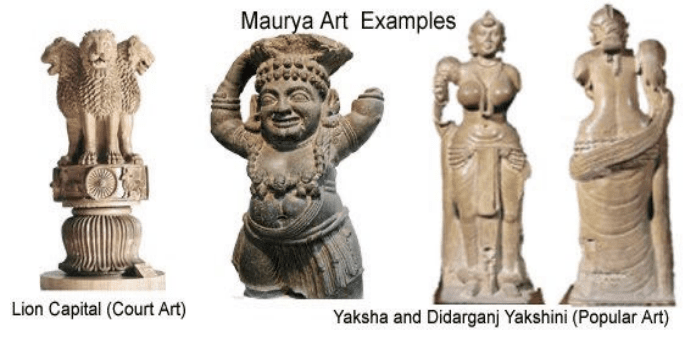
MAURYA COURT ART
- Ashoka started making extensive use of stone for sculptures and monuments whereas the previous tradition consisted of working in wood and clay.
- Mauryan art is notable for bright mirror like polish.
- This art is visible in stone pillars, railings, pillar capitals, animal and human sculptures.
- The important places where the pillars have been found are Lauriya Nandangarh, Rampurva, Sankisa and Sarnath.
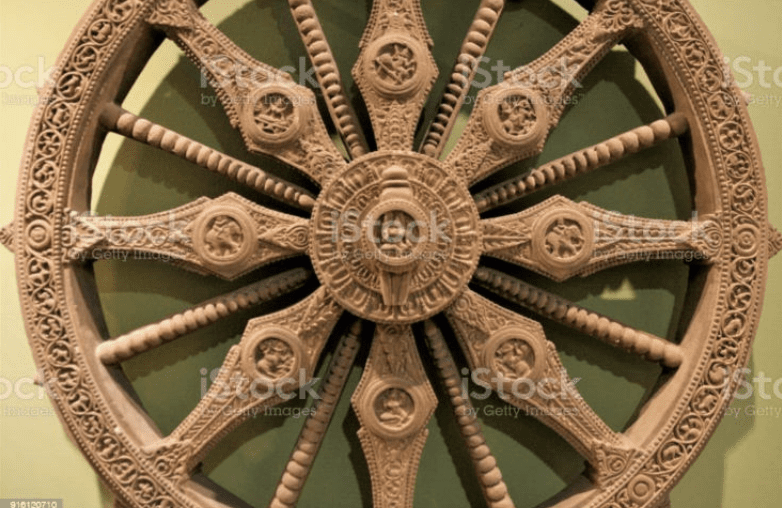
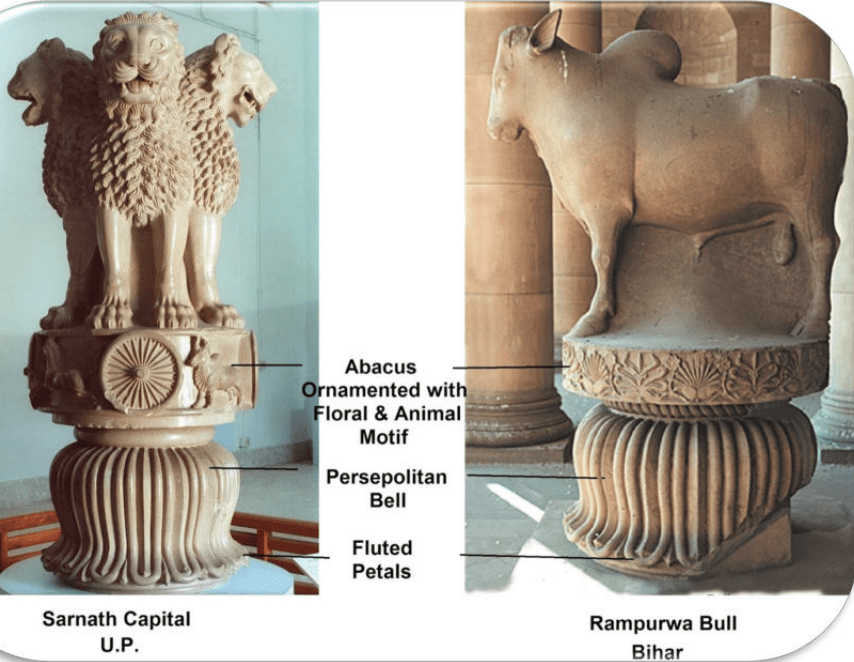
These pillars were carved in two types of stone.
- Spotted red and white sandstone from the region of Mathura.
- Buff-coloured fine grained hard sandstone usually with small black spots quarried in the Chunar near Varanasi, is used.
The uniformity of style in the pillar capitals suggests that they were all sculpted by craftsmen from the same region.
- Noteworthy are the lion capital of Sarnath, the bull capital of Rampurva and the lion capital of Laurya Nandangarh.
- Emperor Ashoka built The Lion Pillar at Kolhua, Vaishali which commemorates Buddha’s last sermon.
- The Vaishali pillar has a single lion capital.
- Sankissa has an elephant capital.
MAURYA POPULAR ART
- The popular art in Maurya period is represented by images of Yakshas and Yakshinis.
- Yaksha refer to the nature-spirits, usually benevolent, also known as fertility spirits. A yakshini is the female counterpart of the male Yaksha.
- Yakshas and Yakshinis have a prominent place in the Hindu, Jain and Buddhist literature and have become part of figure representation in Buddhist and Jaina religious monuments.
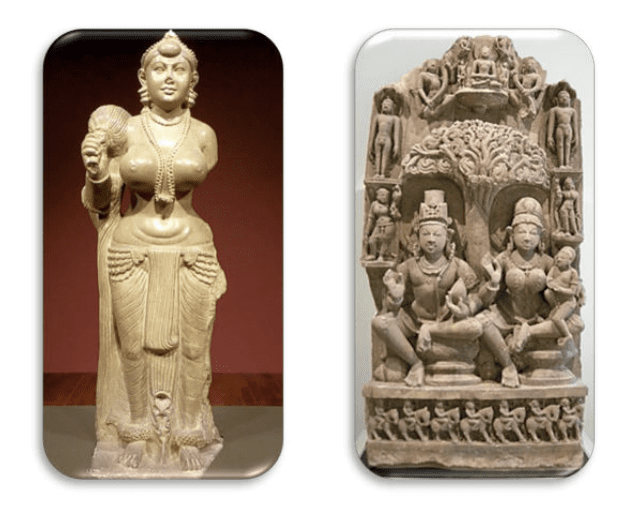
1. DIDARGANJ YAKSHINI, PATNA
- This is a tall, well built, well-proportioned, free-standing sculpture in sandstone with a polished surface.
- The Yakshini holds a chauri (flywhisk) in the right hand whereas the left hand is broken.
- Every fold of the garment on the legs is shown by protruding lines clinging to the legs, which create somewhat transparent effect.
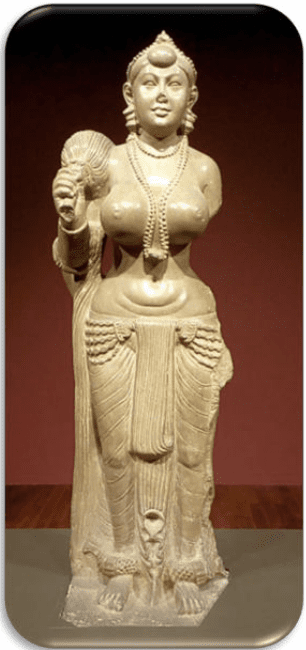
2. ELEPHANT SCULPTURE AT DHAULI
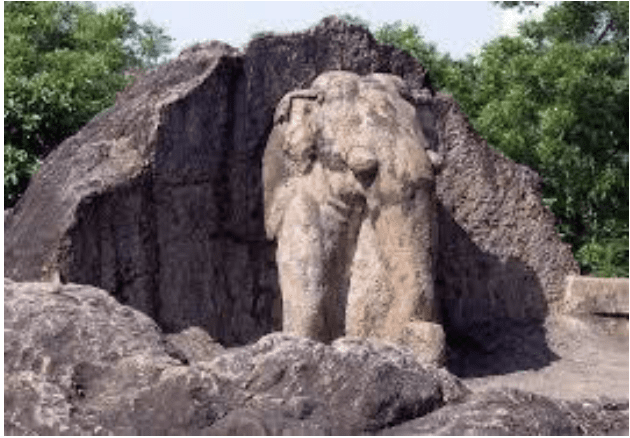
- The rock cut sculpture of Elephant in Dhauli, near Bhubaneshwar in Odisha represents the forepart of an elephant carved over the Edicts of Aśoka.
3. FACADE OF LOMUS RISHI CAVE
- The rock-cut cave carved at Barabar hills near Gaya in Bihar is known as the Lomus Rishi cave.
- The cave was patronised by Ashoka for the Ajivika sect.
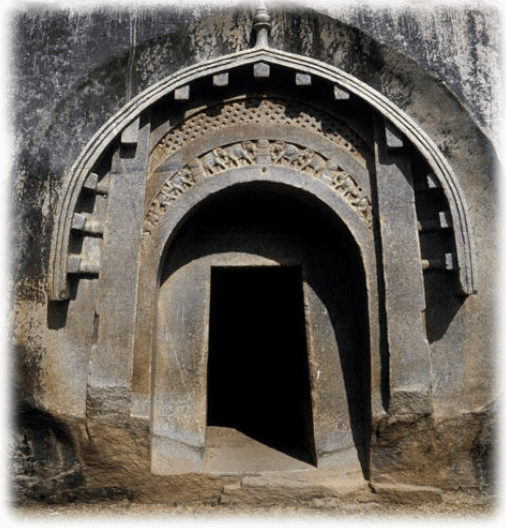
POST – MAURYAN SCULPTURE
- After the crumbling of Mauryan dynasty, the Sungas and Kushans came to power in the North and the Satvahanas in the south.
- Their period marked the beginning of the Indian sculptures wherein the physical forms were becoming more realistic, refined and expressive.
- The sculptors started mastering the art especially of the human body wherein it was carved in high relief and with vigor and heaviness.
- The Ashokan stupas were enlarged and the brick and wood works were replaced with stone work.
- For instance the Sanchi stupa was enlarged and elaborate gateways were added.
- The Sungas reconstructed the railings around the Barhut stupa.
- There is an inscription at the Bharhut stupa which states that the Torana was constructed by the Sungas.
- The Torans indicate the influence of Hellinistic school and other foreign schools in Sunga architecture.
- During this rule of Kanva and Sunga dyansty, a plenty of cave-temples, chaityas and stupas were built.
- The stupas of Bharhut, Bodhgaya and Sanchi and the amazing cave art of Udaygiri and Khandagiri remind us of the heights reached in sculpture.
- Human figures, yakshas-yakshis, figures of birds and beasts, plants and creepers were done in wonderfully intricate patterns; the walls of Ajanta and Udaygiri are very smooth.
SCULPTURES AT BARHUT
Bharhut is basically known for its Stupa which is thought to have been originally established during Asoka’s reign in the 3rd century BC, but was improvised and beautified during the Sunga period (100 BCE).
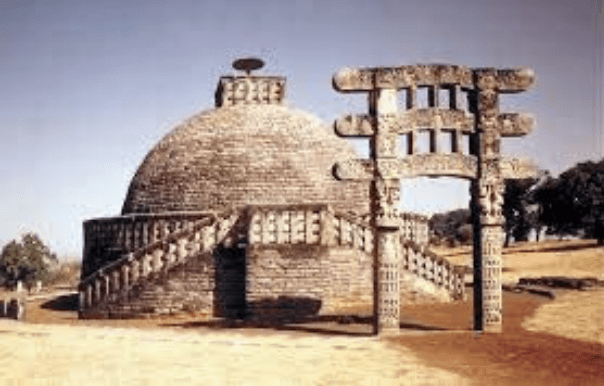
- The inscriptions on these railings show that the reliefs and figures were contributed by lay people, monks and nuns.
- Themes: images of Yaksha and Yakhshini akin to the Mauryan period.
- Stories are made on the railings/vedikas that reminds the onlookers of the virtuous qualities of the Buddha.
- The artists at Bharhut have used the small space available on reliefs to depict the pictorial language very effectively to communicate stories.
- One of such pictorial narrative is the “Queen Mahamaya’s dream”.
- Queen Mahamaya was mother of Gautama Buddha.
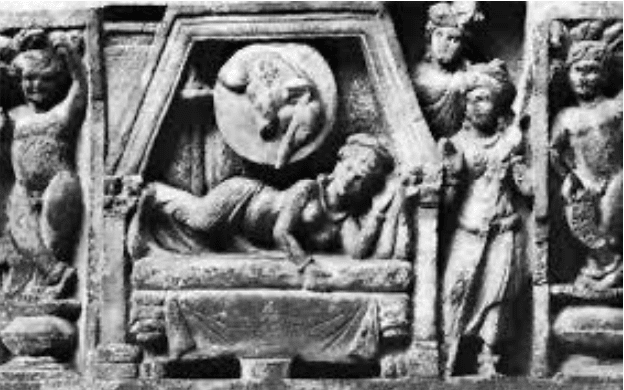
In this image, the queen is shown reclining on the bed whereas an elephant is shown on the top heading towards the womb of Queen Mayadevi.
Similarly, other sculptures depict the Jataka tales, for example the Ruru Jataka where the Boddhisattva deer is rescuing a man on his
SCULPTURES AT SANCHI
The sculptures at Sanchi Stupa shows stylistic progression compared to Bharhut.
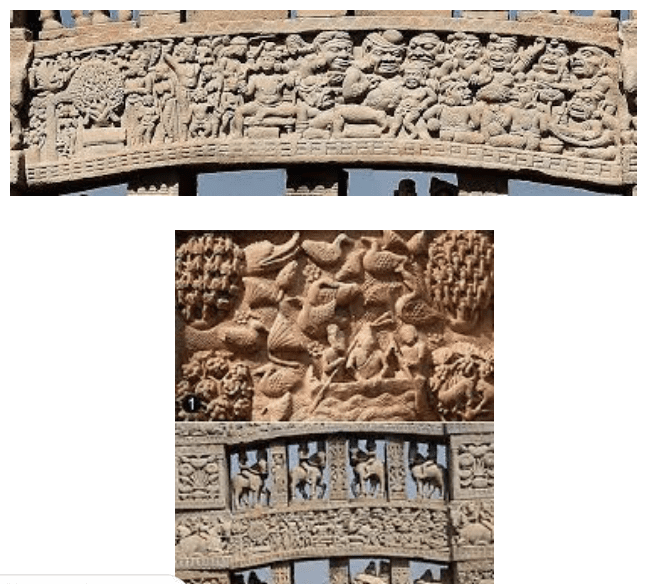
- The stupa-1 at Sanchi has four beautifully decorated toranas depicting various events from the life of the Buddha and the Jatakas.
- In comparison to Bharhut, the relief is high and filled up in the entire space.
- The depiction gets more naturalistic and rigidity in the contours gets reduced.
- The techniques of carving also appear to be more advanced than Bharhut, however Buddhas continues to be prominently depicted as symbols than human figures.
- The narratives get more elaborated; however, the depiction of the dream episode remains very simple showing the reclining image of the queen and the elephant at the top.
- Some of the historical details such as historical narratives of Buddha’s visit to Kapilavastu has been carved in detail.
MATHURA ; GANDHARA ; AMRAVATI SCHOOLS OF ART
MATHURA SCHOOL OF ART
During the first century AD, Gandhara and Mathura School of Art flourished mainly during reign of Kushana emperor Kanishka.
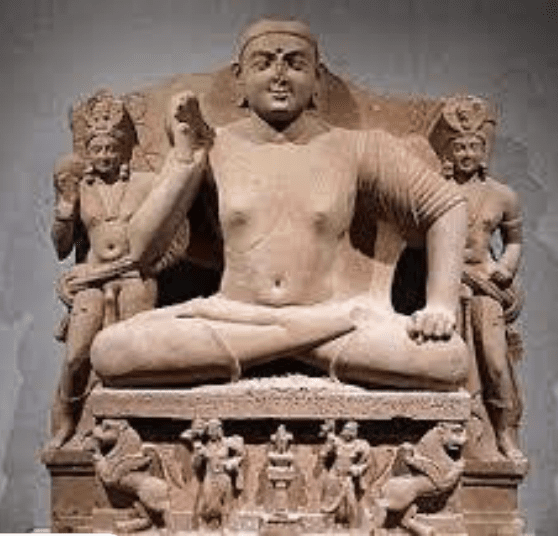
- Mathura School had developed indigenously.
- The main traditional centre of production in this school was Mathura, and other important centres were Sarnath and Kosambi.
- The material used in this school was the spotted red sandstone.
- This art reached its peak during the Gupta period in 6th or 7th century.
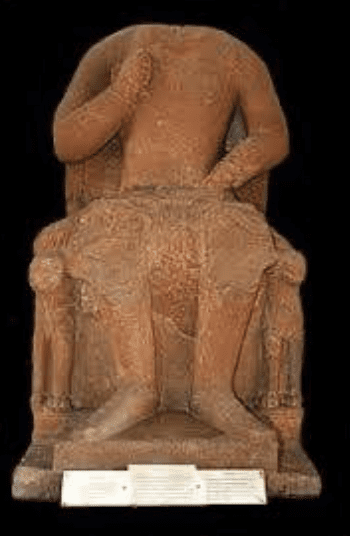
- The Mathura school images include those of Buddha, Bodhisattvas, Vishnu, Shiva, Yakshas, Yakshinis, Jinas etc. representing its vitality and assimilative character as a result of the religious zeal of Brahmanism, Jainism and Buddhism.
- Jina Image and Indigenous style of Buddha’s image was a remarkable feature of Mathura art.
- Master pieces of Mathura sculpture includes: Vima Kadphises and Kaniska, Parkham Yaksa, Maholi Bodhisattva and seated Kubera.
BUDDHA IMAGE
- Before development of this school, Buddha was never depicted in a human form at any of Sanchi, Bharhut or Gaya.
- Buddha was represented only as symbols, mainly two footprints or wheel.
- Artisans from Mathura initially continued to depict symbols but gradually the human image of Buddha appeared independent of other schools of art.
- This image of human Buddha was modelled on images of Yakshas.
- However, the initial image makers did not care for an anatomically correct Buddha image.
- The early images of the Buddha and the Bodhisattva are happy, fleshy figures with little spirituality about them.
- They have block like compactness and smooth close-fitting robe, almost entirely devoid of folds.
In the second century AD, images got sensual with increased rotundness and
became fleshier.
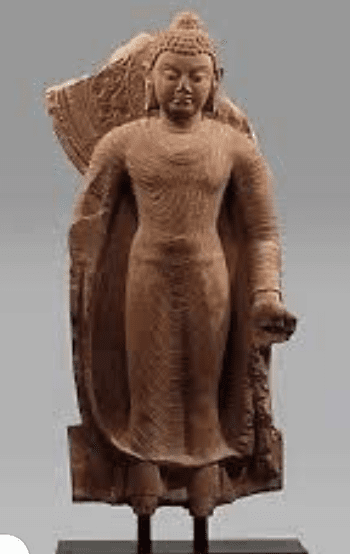
- The extreme fleshiness was reduced by the third century AD and the surface features also got refined.
- The trend continued in the fourth century AD, the massiveness and fleshiness was reduced further and the flesh became more tightened.
- The halo around the head of Buddha was profusely decorated.
- The later evolution of Human form of Buddha was associated with humanly beauty and heroic ideals.
- Both sitting and standing posture of Buddha and Bodhisattvas were carved out in the Mathura school.
- The Standing Buddha from Kausambhi is the finest example of Buddha image under this
VAISHNAVA AND SHAIVA IMAGES
The images of Vaishnava and Shaiva faiths are also found at Mathura but Buddhist images are found in large numbers.
JAINA IMAGES
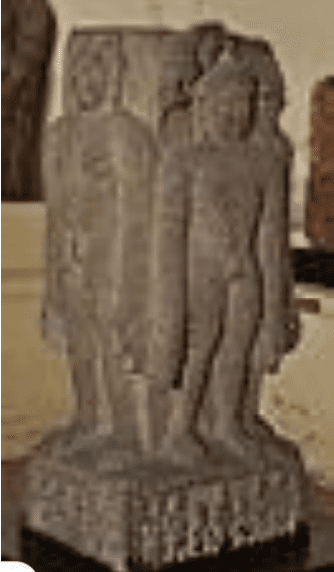
The Sarvatobhadrika image of 4 Jinas standing back to back belongs to the Mathura school.
GANDHARA SCHOOL OF ART
- The Gandhara School of art had also developed in first century ad during reign of Kushana emperor Kanishka
- The Gandhara school of art flourished from first century ADto fifth century AD whereas the Mathura school of art originated in the first century AD and flourished till twelfth century AD.
- Both Shakas and Kushanas were patrons of Gandhara School, which is known for the first sculptural representations of the Buddha in human form.
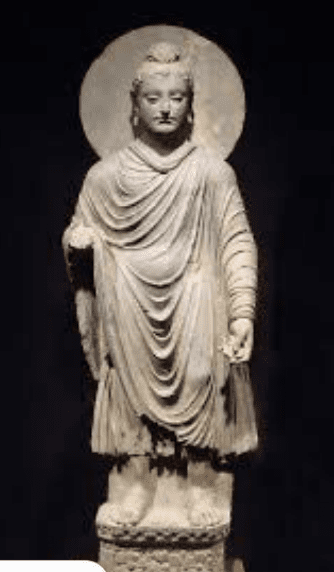
- The art of the Gandhara school was primarily Mahayana and shows Greco-Roman influence, encapsulating foreign techniques and an alien spirit.
- It is also known as Graeco-Buddhist School of art. The foreign influence is evident from the sculptures of Buddha in which they bear resemblance to the Greek sculptures.
- Grey sandstone (Blue-grey Mica schist to be precise) is used in Gandhara School of Art.
Examples of Gandhara Art
The Bamyan Buddha of Afghanistan is a unique example of the Gandhara School
adorned with gold jewelry. The other materials used were Mud, Lime, Stucco.
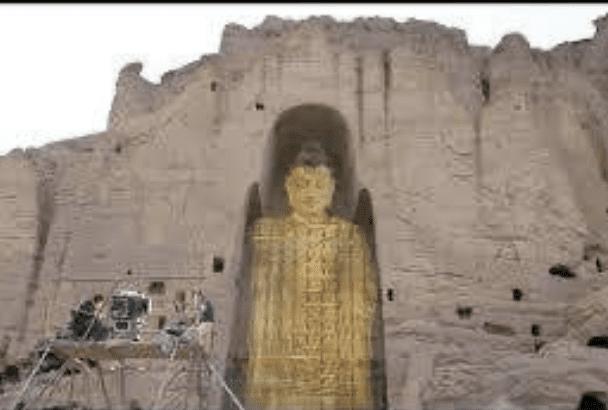
Bimaran Casket has yielded the earliest specimen of the Gandhara Art.
- MAJOR CENTRES: Jalalabad, Hadda, Bamaran, Begram & Taxila were the main centers where art pieces of Gandhara School have been found.
- The Gandharan Buddha image was inspired by Hellenistic realism, influenced by Persian, Scythian, and Parthian models.
- In contrast with Mathura School, the Gandhara School images are known for their anatomical accuracy.
- In this art, Buddha’s curls were altered into wavy hair.
- The head of the Buddha matched very much with Greek God Apollo.
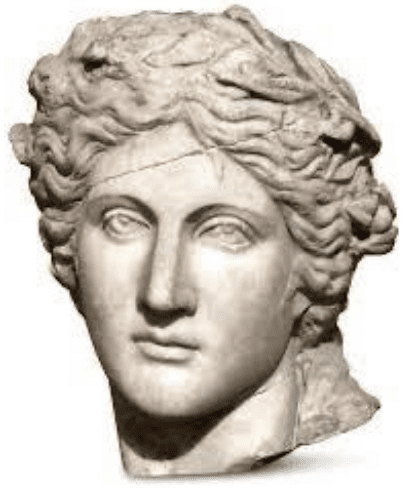
The Various Mudras of Buddha in GandharaArt
- Dharmachakramudra: a preaching mudra. This mudra symbolizes the occasion when Buddha preached his first sermon after his Enlightenment in the Deer Park at Sarnath.
- Bhumisparshamudra: Touching the earth, This mudra symbolizes the Buddha’s enlightenment under the bodhi tree, when he summoned the earth goddess, Sthavara, to bear witness his purity and chastity despite the temptations of Mara.
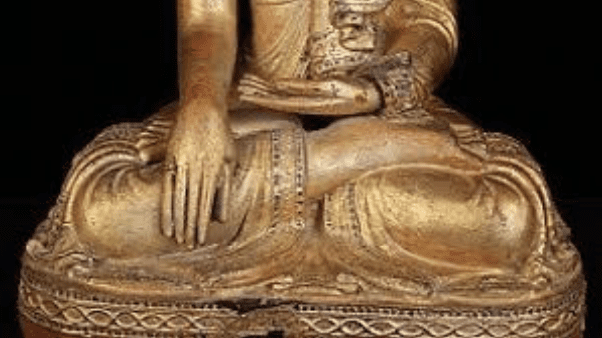
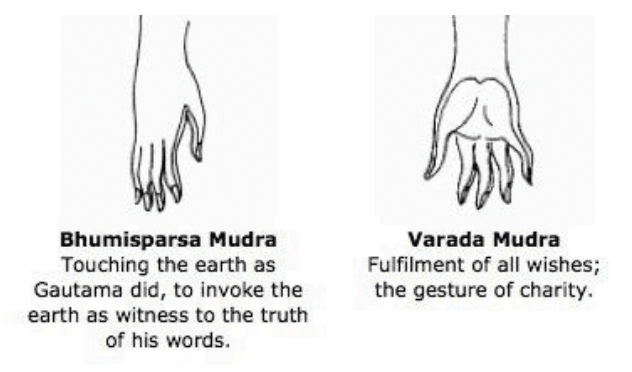
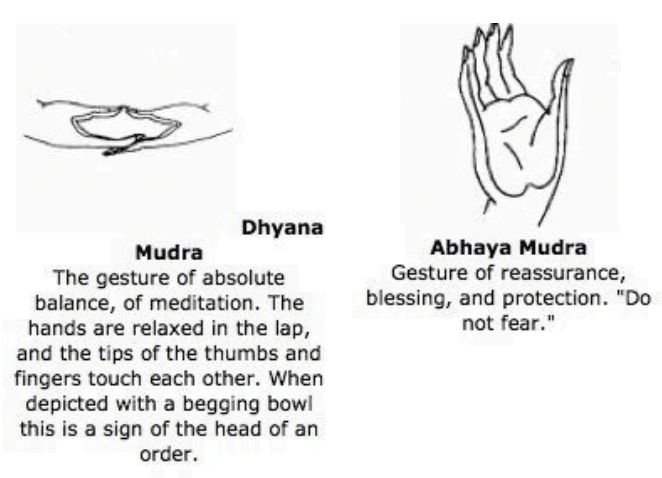
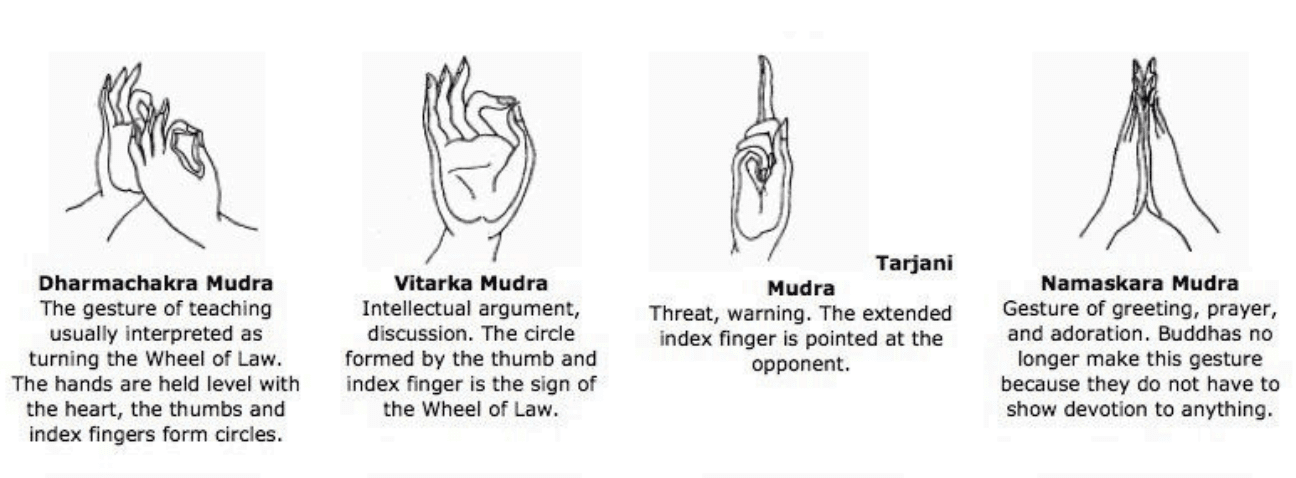
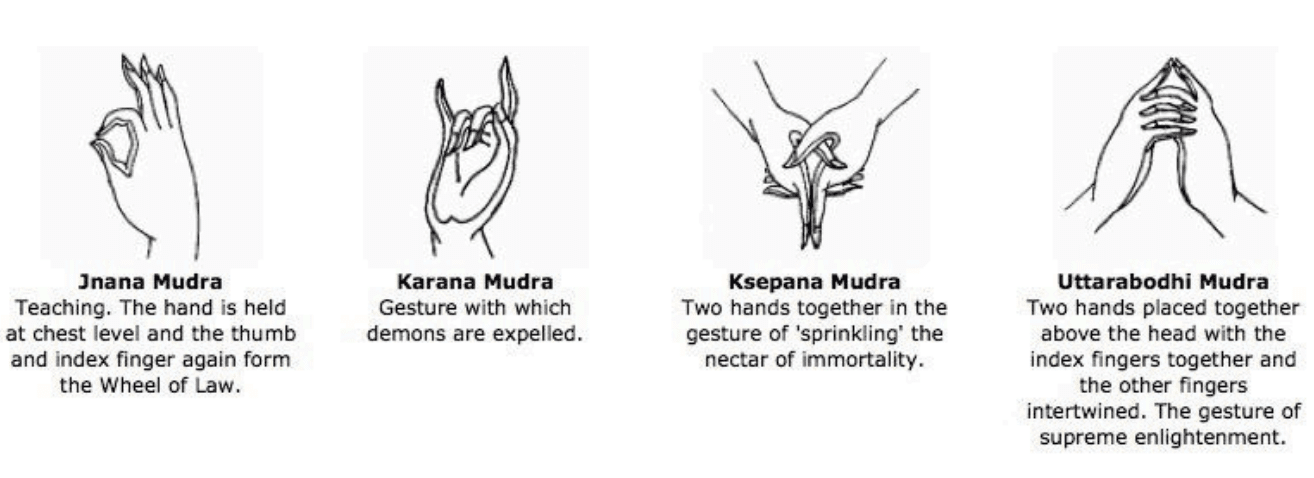
GREEK & ROMAN INFLUENCE ON GANDHARA ART
Roman influence Artistic interpretation:
- In artistic interpretation; Buddha of Gandhara is sometimes presented through Roman art techniques using vine scroll; cherub wearing Garland
- The tradition of representation of Buddha in human form is inspired from Roman anthropomorphic tradition.
- Dresses: The outer robe of Buddha of Gandhara like kaaya; antarvasaresembles to attire of Roman gods.
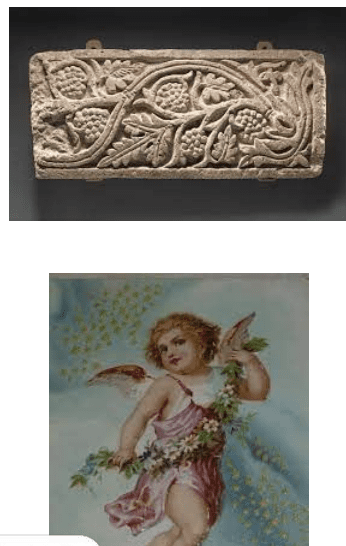
GREEK INFLUENCES
- Greek god as protector: In many images ofBuddha in Gandhara ; he is seen under the protection of Greek god Hercules.
- Greek architectural influence: Some images of Buddha in Gandhara are presented in Greek architectural environment bearing the affinity of Corinthian.
- Artistic beauty: The Apollo like face of Buddha; natural realism; wavy hair as seen in images of Buddha in Gandhara resembles to Hellenistic tradition.
- Intellectual affinity: The halo and bun of Gandhara Buddha signifies intellectual ambitions of Buddha that have close affinity to Greek traditions
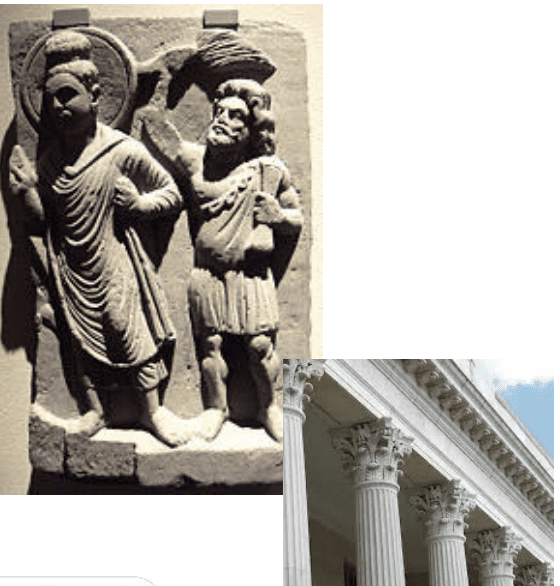
CENTRAL ASIAN INFLUENCE
- Many features of Gandhara art are owed to Central Asia particularly the Parthian culture.
- Drapery of Buddha statues similar to Parthian (modern Iran)drapery in Hellenistic cultures.
- Curly hair of Buddha statue also resembles similarity with Parthian style.
- The disc shaped halo around Buddha head similar to Persian culture of reverence to sun.
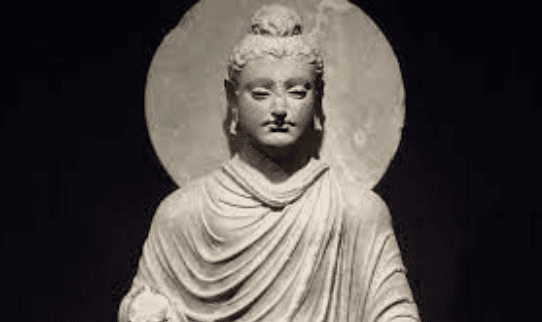
Q. Highlight the Central Asian and Greco-Bactrian elements in Gandhara art.
Q. Gandhara sculpture owed as much to the Romans as to the Greeks. Explain.
Q. Early Buddhist Stupa-art, while depicting folk motifs and narratives successfully expounds Buddhist ideals. Elucidate.
AMRAVATI SCHOOL OF ART
- The third type of sculpture art that flourished from about 1 cen AD, under the Satavahanas was at Amaravati and Nagarjunkonda in Andhra Pradesh.
- Unlike the school of Mathura, which concentrates on the carving of single figures, the Amaravati school carried to the fullest limit of its development the ancient tradition of relief sculpture as seen in Sanchi and Bharhut.
- The sculptural remains of Amaravati have found their way to the British Museum and the Madras Museum.
- But the carvings of Nagarjunakonda are preserved almost in entirety at the site.
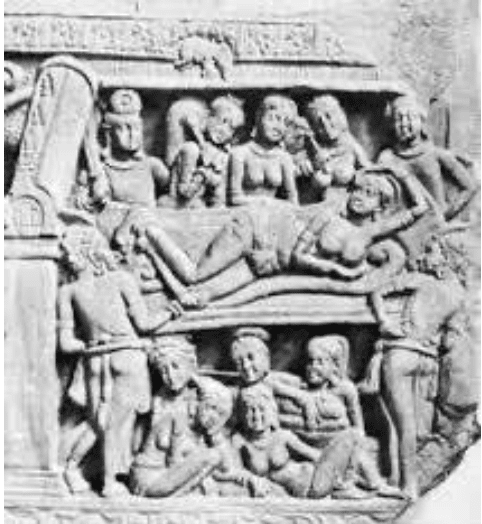
- The white lime stone of the sculptures creates the illusion of marble.
- Amravati school also uses white marble.
- The themes depict Buddha’s life and Jatakas tales.
- The curly hair of Buddha are a feature that is influenced by the Greeks.
- In these schools, the Kings, Princes, Palaces etc. have got prominence.
- Amravati school of art had great influence on art in Sri Lanka and South-East Asia as products from here were carried to those countries.
SARNATH SCHOOL OF ART
- During the Gupta period, a new school of sculpture developed around Sarnath.
- It was characterised by the use of cream coloured sandstone and the use of metal.
- The body in its smooth and shining plasticity constitutes the principal theme of the Sarnath artists.
- The sculptures of this school were immaculately dressed and lacked any form of nakedness.
- The halo around the head of Buddha was intricately decorated.
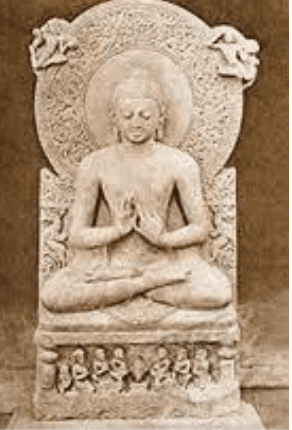
Previous Years Questions
Lord Buddha’s image is sometimes shown with the hand gesture called ’Bhumisparsha Mudra’. It symbolizes
(a) Buddha’s calling of the Earth to watch over Mara and to prevent Mara from disturbing his meditation
(b) Buddha’s calling of the Earth to witness his purity and chastity despite the temptations of Mara
(c) Buddha’s reminder to his followers that they all arise from the Earth and finally dissolve into the Earth, and thus this life is transitory
(d) Both the statements (a) and (b) are Correct in this context
What is/are common to the two historical places known as Ajanta and Mahabalipuram?
- Both were built in the same period.
- Both belong to the same religious denomination.
- Both have rock-cut monuments.
Select the correct answer using the code given below.
(a) 1 and 2 only
(b) 3 only
(c) 1 and 3 only
(d) None of the statements given above is correct
With reference to the art and archaeological history of India, which one among the following was made earliest?
(a) Lingaraja Temple at Bhubaneswar
(b) Rock-cut Elephant at Dhauli
(c) Rock-cut Monuments at Mahabalipuram
(d) Varaha Image at Udayagiri
With reference to the history of Indian rock-cut, architecture, consider the following statements
- The caves at Badami are the ’oldest surviving rock-cut caves in India.
- The Barabar rock-cut caves were originally made for Ajivikas by Emperor Chandragupta Maurya.
- At Ellora, eaves were made for different faiths.
Which of the statements given above is/ are correct?
(a) 1 only
(b) 2 and 3 only
(c) 3 only
(d) 1, 2 and 3